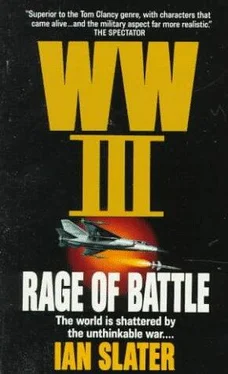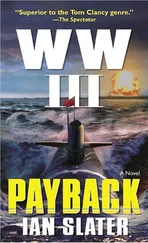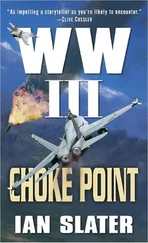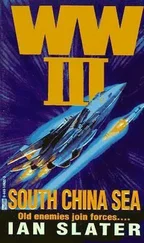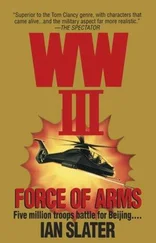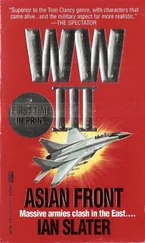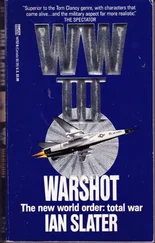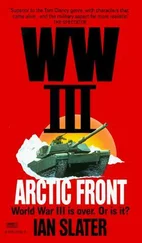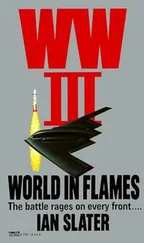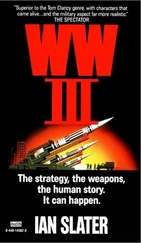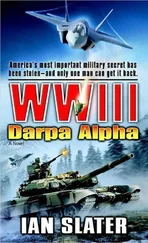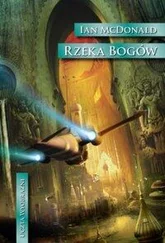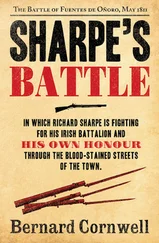Ian Slater - Rage of Battle
Здесь есть возможность читать онлайн «Ian Slater - Rage of Battle» весь текст электронной книги совершенно бесплатно (целиком полную версию без сокращений). В некоторых случаях можно слушать аудио, скачать через торрент в формате fb2 и присутствует краткое содержание. Год выпуска: 1991, ISBN: 1991, Издательство: Ballantine Books, Жанр: Триллер, на английском языке. Описание произведения, (предисловие) а так же отзывы посетителей доступны на портале библиотеки ЛибКат.
- Название:Rage of Battle
- Автор:
- Издательство:Ballantine Books
- Жанр:
- Год:1991
- ISBN:0-345-46514-8
- Рейтинг книги:3 / 5. Голосов: 1
-
Избранное:Добавить в избранное
- Отзывы:
-
Ваша оценка:
- 60
- 1
- 2
- 3
- 4
- 5
Rage of Battle: краткое содержание, описание и аннотация
Предлагаем к чтению аннотацию, описание, краткое содержание или предисловие (зависит от того, что написал сам автор книги «Rage of Battle»). Если вы не нашли необходимую информацию о книге — напишите в комментариях, мы постараемся отыскать её.
Rage of Battle — читать онлайн бесплатно полную книгу (весь текст) целиком
Ниже представлен текст книги, разбитый по страницам. Система сохранения места последней прочитанной страницы, позволяет с удобством читать онлайн бесплатно книгу «Rage of Battle», без необходимости каждый раз заново искать на чём Вы остановились. Поставьте закладку, и сможете в любой момент перейти на страницу, на которой закончили чтение.
Интервал:
Закладка:
Despite his prediction of an impending invasion of the South by the North in August, Tae’s warning was not heeded, in the main because an invasion during the monsoon was a no-no in any self-respecting army manual. Even the most junior U.S.-ROK officer knew that your heavy armor would simply bog down in the rains.
In the early hours of August 16, the morning following the South’s annual Independence Day celebrations, the NKA had struck, overwhelming the U.S.-ROK forces all along the line, the NKA’s light, Soviet-made fourteen-ton PT-76 tanks able to move much faster and with more maneuverability than the much heavier and mud-bound fifty-five-ton American M-1s.
Behind the armor, tens of thousands of NKA regulars came pouring out of the tunnels that had been painstakingly dug under the DMZ over several years during North Korean and U.S.-ROK maneuvers when normally sensitive ground noise sensors were rendered useless by the smothering noise of the maneuvers themselves. The United States had found three tunnels in the 1970s and cemented them up, with machine guns at each exit, but the NKA had dug others, which had gone undetected. Many of their troops streamed out in a massive feint that successfully engaged the bulk of the U.S.-ROK forces on the DMZ. This allowed the NKA’s famous Fourth Armored Division, whose forebears had spearheaded the NKA invasion of the South in 1950, to make an end run, breaking through down the Uijongbu Corridor, only eleven miles north of Seoul. Most of the long-standing U.S.-ROK booby traps on the eleven-mile stretch to Seoul had been neutralized by NKA commando teams, while other widespread and synchronized sabotage by “in place” NKA cells effectively gutted the crucial American chopper and fighter bases in the South.
In the face of the NKA’s byorak kongkyok— “lightning wars”—U.S.-ROK communications in a shambles from the sabotage, there had been panic in both the American and South Korean regiments. On the DMZ, Tae had fought bravely in his intelligence headquarters outside Panmunjom, but with the NKA having encircled him and threatening to annihilate everyone in the area unless he surrendered, Tae had been captured.
But if the NKA’s General Kim had succeeded in wreaking a humiliating defeat upon the Americans, his army was about to receive a rude shock. Douglas Freeman, his career looking as if it was about to be eclipsed by the younger men who had inherited the chronic instability of the post-Gorbachev world, devised and led a raid on Pyongyang. Confounding all military logic with a nighttime air cavalry attack on the North Korean capital launched from F-14-escorted choppers off carriers in the Sea of Japan, Freeman’s raid cut the NKA’s overextended supply line to the South. In doing so, Freeman bought precious time for reinforcements from Japan to reach the embattled U.S. and ROK forces, who, their backs to the sea, were fighting a bitter retreat along a fan-shaped perimeter running east-west for eighty-three miles from Pusan to Yosu on Korea’s south coast. Once reinforced and regrouped with an infusion of the fresh troops from bases on Japan’s west coast, the American army and the ROK were soon able to launch a counterattack over the next seven weeks during which they had retaken Seoul and crossed the DMZ, now entering the area around Kaesong where the U.S.-ROK overnight convoy had been attacked.
But while Freeman’s daring attack had electrified the world, as had Doolittle’s on Japan in 1941, and made it possible for the U.S.-ROK forces to retake the DMZ, the American troops that liberated the Uijongbu POW camps and set the then emaciated Tae free had come too late for Tae’s family. His wife and eight-year-old son had been strafed and killed, his nineteen-year-old daughter, Mi-ja, captured, betrayed by a boyfriend, Jung-hyun, who, an active member of the SFR— Students for Reunification — had talked her into the huge student demonstrations against the Americans that had preceded the NKA invasion. Jung-hyun, like so many from the SFR, was now believed by the U.S.-ROK intelligence to be an NKA officer somewhere in the North.
Now, amid the roar of battle, looking down on the wind-flattened green of the rice paddy, Tae was braced to jump but knew he must wait — watching long, dense trails of white smoke rising from where the Cobra escorts had dropped smoke canisters to curtain off the paddy from the thick scrub on the northern side of the east-west ditch. The scrub was erupting with dust from the fragmentation rockets and tracer from the 7.76-millimeter, so powerful, it was cutting saplings clean through, branches trembling, then flung to the ground, creating more dust, on fire and adding to the smoke.
Tae lifted his squad automatic weapon and waved the six other men to follow him out. Heads lowered, rivulets of water spreading away from them through the violently shivering grass, the men spread out, the splashing sound of their canvas-topped boots lost amid the whistle of bullets and machine-gun fire coming from beyond the scrub through the smoke screen, the shuffling noise of the big 120-millimeter mortar adding to the scream of the Hueys’ engines as the choppers hovered a foot or so from the ground while they unloaded, bullets thwacking into the fuselage. But Tae was unafraid, already well ahead of the squad, traversing the ditch and, to the other squad members’ astonishment, going straight over its protective wall into the thick smoke cover.
“Jesus!” shouted one of the air cavalrymen. “He’s crazy!”
The soldier was right. Something had happened to Tae the night that the North Korean major had brought in what he called a soltuk— “inducement”—for Tae to reveal the names of the top three KCIA counterinsurgency chiefs in the Pusan-Yosu region.
Tae had withstood the initial beatings, steeled himself enough to get through the unrelieved panic of the NKA soldiers holding him down, one of them stuffing a filthy rag, stinking of gasoline, into his mouth, pushing him underwater, then tying him to a chair, blindfolding him, suddenly tipping the chair back, catching it, setting it upright, tipping it back again to increase the panic. And men, as four men held him, another taking the pliers to his testicles. But his last torture had its own answer — a half second after they began, he blacked out. They’d left him for two days — back in his cell — giving him plenty of time to think about the pain next time, his strength fading, his only food a scum-rimmed rice cup of watery soup, a small piece of rancid meat flung into it. It was white and they told him it was fish, but he knew it wasn’t, having seen dozens of rats scampering through the cells and feeling them scuttling over his face and stomach during the night. When they brought him into the tent the third day, the major had asked him if he had enjoyed the meal. Tae, his arms pulled back and pinned by the guard, looked at the NKA major and, with his voice hissing through the broken teeth and raspy from dehydration, replied, “Very much. Thank you.”
“I’m glad you did,” said the NKA major, walking over and smiling down at him. “It was one of your allies.”
Tae did not believe him until he was dragged back into the cells again for refusing to identify any of the KCIA section chiefs. He knew that the NKA guards, as UN troops had discovered in another Korean War long ago, were regarded as the cruelest possible captors, surpassing even the brutality of the Japanese. Still, he was not prepared for what he saw. A white man, limbs tied to an upright mattress frame that was propped against the shell-pocked remains of the Uijongbu Catholic church, was being used for bayonet practice — the man still alive. It turned out that the man was not one of the Swedish UN observers from the DMZ but a young American from a signals corps captured near Uijongbu. What Tae remembered most about the man was how long it had taken him to die. A squad of NKA militia, having cut a crude U.S. of A. flag on his stomach, had bayoneted him again and again, literally disemboweling him, then, once he’d been cut down from the frame, hacked him to death, in the same way as in the 1979 “incident” when NKA troops had stormed across the DMZ and murdered two Americans who had been trimming a tree for a better view across the line.
Читать дальшеИнтервал:
Закладка:
Похожие книги на «Rage of Battle»
Представляем Вашему вниманию похожие книги на «Rage of Battle» списком для выбора. Мы отобрали схожую по названию и смыслу литературу в надежде предоставить читателям больше вариантов отыскать новые, интересные, ещё непрочитанные произведения.
Обсуждение, отзывы о книге «Rage of Battle» и просто собственные мнения читателей. Оставьте ваши комментарии, напишите, что Вы думаете о произведении, его смысле или главных героях. Укажите что конкретно понравилось, а что нет, и почему Вы так считаете.
